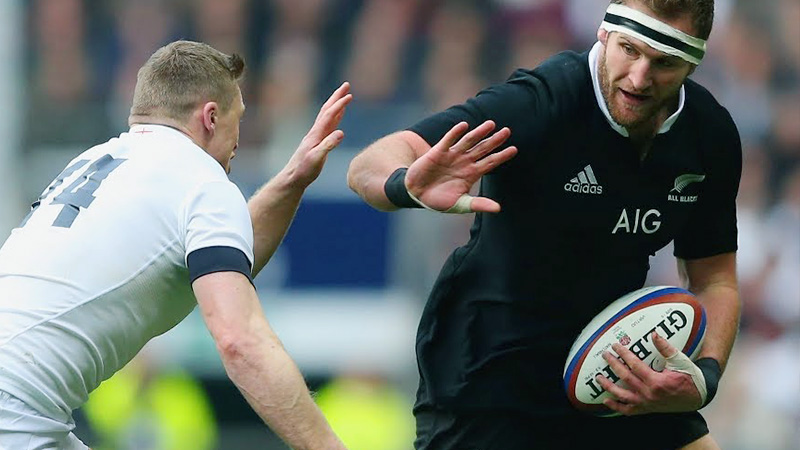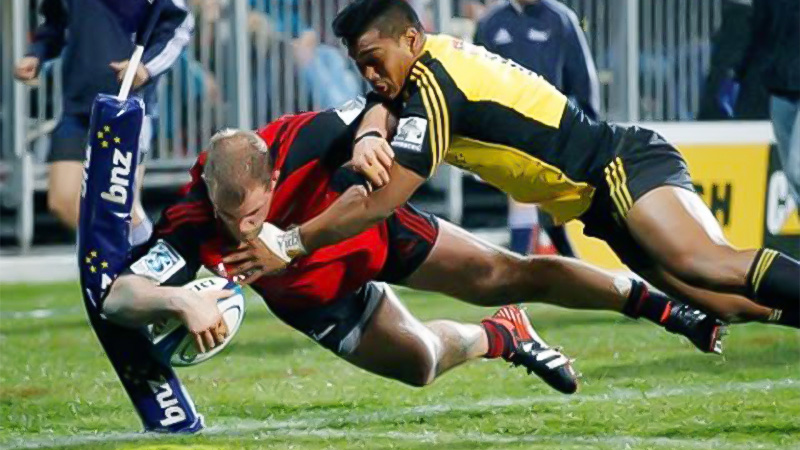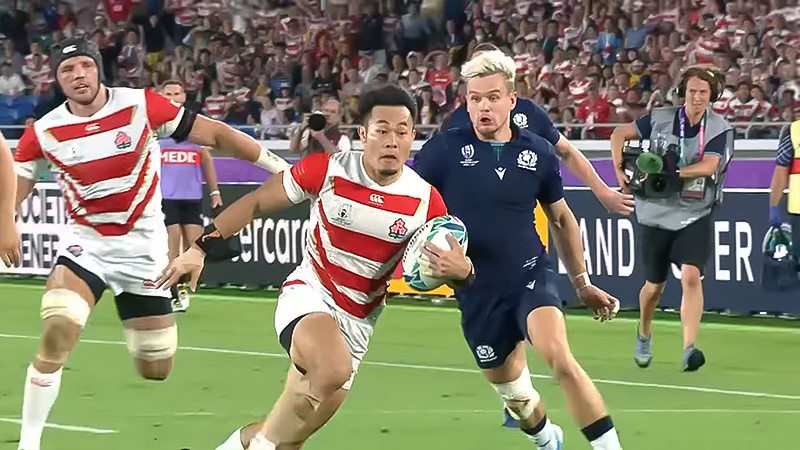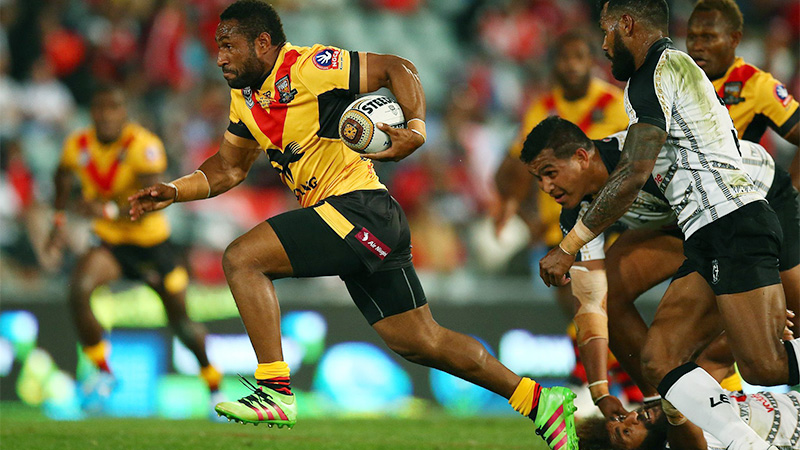Playing as a wing in rugby league is an electrifying and essential position that demands a unique blend of speed, agility, and versatility. Positioned on the fringes of the backline, wingers are tasked with the exhilarating role of scoring tries, while also contributing to the team’s defensive efforts.
This comprehensive guide will delve into the key aspects of playing wing effectively in rugby league, from developing lightning-fast speed and mastering ball-handling skills to understanding defensive positioning and the art of finishing tries.
Whether you’re a budding winger looking to refine your skills or a rugby enthusiast keen on understanding the intricacies of this position, this guide will equip you with the knowledge and techniques to thrive as a wing in rugby league.
What is the Role of a Wing in the Rugby League?

The role of a wing in rugby league is multifaceted, with a primary focus on scoring tries and providing support to the team’s attack. Positioned on the edges of the backline, wingers are renowned for their speed and agility, making them crucial finishers in try-scoring opportunities.
They must also contribute to defensive efforts, making tackles and providing cover defense. Additionally, wingers play a key role in fielding kicks, offering kick returns, and creating opportunities for their team.
Effective communication with inside defenders is vital for coordinated defensive efforts, while their speed and positional awareness allow them to impact both offensive and defensive aspects of the game.
How to Play Wing in Rugby League?
Playing as a wing in rugby league is a thrilling and challenging role that demands a unique set of skills and attributes.
Here’s a comprehensive guide on how to play wing effectively in rugby league:
Embrace Your Role
As a winger in rugby league, it’s vital to understand your primary role. Your primary responsibility is to score tries for your team. You’ll often position yourself on the fringes of the field, ready to receive passes and exploit scoring opportunities.
In addition to your attacking duties, you must also fulfill defensive responsibilities, including tackling opponents and defending your wing.
Develop Speed and Agility
Speed is one of your most critical assets as a winger. Engage in sprint training to improve both your acceleration and top-end speed. Agility drills, such as ladder drills and cone exercises, will help you change direction rapidly, making you elusive and difficult for defenders to catch.
Hone Ball-handling Skills
Strong ball-handling skills are essential. Regularly practice catching and passing accurately to contribute to your team’s attacking plays. Additionally, work on securing high balls confidently, as you may encounter contested catches during games.
Master Defensive Techniques
Effective tackling is crucial to your game as a winger. Learn proper tackling techniques and positioning to become a reliable defender. Focus on making low tackles, which target the ball carrier’s legs and prevent breaks.
Cover Defense
Be prepared to provide cover defense. This involves tracking back quickly when kicks or breaks occur on the opposite side of the field. Your speed is an asset in getting back to make tackles or contest kicks, preventing scoring opportunities for the opposition.
Scoring Tries
Understand the art of positioning for tries. Learn where to be when your team is on the attack. Be ready to support inside runners, follow playmakers, and position yourself optimally for try-scoring opportunities.
Finishing Moves
When you’re close to the try line, employ effective finishing techniques. Aim for the corner to make it challenging for defenders to tackle or push you into touch.
Execute a low dive while extending your arm to ground the ball over the try line while maintaining control.
Game Awareness
Study your opponents, particularly the opposing winger and fullback. Identify their strengths and weaknesses to exploit during the game. Maintain proper defensive positioning to cover your opposite winger effectively while also supporting your fullback when necessary.
Support Play
Engage in both attacking and defensive support play. In attack, run support lines, provide options for offloads, and position yourself strategically to create try-scoring opportunities.
In defense, offer support to your inside defenders and track back to assist the fullback in covering kicks or breaks on the opposite side of the field.
Communication
Effective communication with your inside defenders is crucial for coordinating defensive efforts and ensuring proper alignment. Keep your communication clear and constant to facilitate seamless teamwork.
How to Defend as a Winger in Rugby League?

Defending as a winger in rugby league is a crucial aspect of your role on the team. While your primary responsibility is to excel in attack and score tries, it’s equally essential to be a reliable defender.
Here’s a comprehensive guide on how to defend effectively as a winger in rugby league:
Positioning
Proper positioning is fundamental to effective defense. As a winger, you should maintain a position wide on the field, near the touchlines. This positioning creates a barrier that makes it difficult for opposition players to exploit the edges of the field.
By staying wide, you can limit the space available for your opponents to work with, forcing them inside where your teammates can provide support.
Tracking Back
Be prepared to track back swiftly when the opposition initiates a counter-attack or break. Your speed is your advantage here. React quickly to changes in the game’s dynamics, and don’t hesitate to sprint back to support your teammates in defense.
This ability to track back rapidly can prevent potential scoring opportunities for the opposition.
Communication
Effective communication is crucial in defense. Constantly communicate with your inside defenders, such as centers and the fullback. Relay information about the opposition’s movements, overlaps, and potential threats.
Clear and concise communication ensures that everyone is on the same page and can respond effectively to the evolving situation.
One-on-one Tackling
Wingers often face one-on-one tackling situations against the opposition’s wingers or centers. Focus on honing your one-on-one tackling skills. Aim for low tackles targeting the ball carrier’s legs to halt their progress.
Ensure you wrap up the ball carrier securely to prevent offloads or breaks.
Cover Defense
Part of your defensive responsibilities involves providing cover defense when necessary. This means tracking back to support your fullback or other inside defenders when kicks or breaks occur on the opposite side of the field.
Your speed is an asset here, allowing you to cover ground quickly and prevent scoring opportunities for the opposition.
Reading the Game
Develop the ability to read the game and anticipate the opposition’s attacking plays. By anticipating their moves, you can position yourself more effectively to cut off passing lanes, intercept passes, or make timely tackles.
Reading the game enhances your ability to contribute to turnovers and counter-attacks for your team.
Aerial Contests
Be ready for aerial contests when contesting high kicks. This involves competing with the opposition’s players to catch or regain possession of the ball.
Work on your jumping, timing, and catching skills to excel in these situations. Winning aerial contests can disrupt the opposition’s attacking plays and provide your team with valuable possession.
Line Speed
Work on your line speed in defense. When the opposition is in your vicinity, move up quickly to put pressure on the ball carrier. This can disrupt their attacking flow, force rushed decisions, and potentially lead to errors or turnovers.
Fitness and Endurance
Maintain high levels of fitness and endurance. Wingers cover a significant amount of ground during a match, both in attack and defense. Having the stamina to defend effectively throughout the game is essential for your team’s success.
Adaptability
Be adaptable in your defensive approach. Recognize when to engage in one-on-one tackles, when to provide cover defense, and when to communicate critical information to your teammates.
Adapting to the evolving game situations allows you to make the right defensive decisions at the right time.
What Are Some Advanced Tactics for Wingers in Rugby League?

Advanced tactics for wingers in rugby league can elevate your performance and make you a game-changer on the field. These strategies go beyond the basics, allowing you to exploit opportunities and outmaneuver opponents effectively.
Here are some advanced tactics for wingers in rugby league:
Precision Sidesteps and Feints
Mastering precise sidesteps and feints is an advanced skill for wingers. It involves using deceptive footwork and body movements to wrong-foot defenders.
Practice quick changes of direction and timing to create openings in the defensive line. A well-executed sidestep can leave your opponent grasping at thin air, giving you a valuable edge in breaking through.
Timing in Support Play
Advanced wingers have impeccable timing when supporting their teammates in attack. Anticipate passes and offloads, positioning yourself perfectly to receive the ball in stride.
This not only keeps the attacking momentum flowing but also allows you to exploit defensive gaps with well-timed support runs.
Positioning for Cross-field Kicks
Expert positioning when anticipating cross-field kicks is essential for wingers. It’s about finding the right balance between staying wide to catch the ball and ensuring you are in a defensively sound position.
Being in the right place at the right time can lead to try-scoring opportunities or crucial defensive interventions.
Creating Overlaps
Recognizing when to create overlaps with your center or second-rowers is a sign of an advanced winger. Your speed and awareness can be used to exploit gaps in the opposing defensive structure.
By positioning yourself cleverly and communicating with your teammates, you can put your side in prime attacking positions.
Chasing Kicks
Advanced wingers excel in chasing kicks effectively. Timing is crucial here. Ensure your pursuit is perfectly timed, and apply pressure on the opposition’s catcher or fullback.
This increases the likelihood of forcing errors, regaining possession, or even scoring directly from a well-chased kick.
Cutting Inside
Surprising the defense by cutting inside instead of hugging the touchline is an advanced tactic. This unexpected move can create confusion among defenders and open up opportunities for you or your support runners.
It’s essential to execute this tactic when the situation is right, exploiting gaps in the defense.
Defensive Reads
Advanced wingers have a deep understanding of the game, particularly when it comes to reading the opposition’s attacking plays. Knowing when to hold your position on the wing and when to commit to the defensive line is crucial.
Effective defensive reads can lead to interceptions, turnovers, and crucial tackles.
Strategic Counter-attacking
Counter-attacking strategically is another advanced skill. After fielding a kick, assess the situation quickly. Decide whether to run, pass, or kick based on the field position and defensive alignment.
Making the right choice can lead to significant gains in territory and momentum.
Winger to Fullback Link
Establishing a strong defensive partnership with your team’s fullback is crucial. Effective communication and coordination are vital for covering kicks, supporting each other in defense, and handling opposition backline movements.
This partnership enhances your team’s defensive solidity.
Psychological Tactics
As an advanced winger, you can use your presence on the wing to play psychological games with your opposite number. Vary your positioning, speed, and running lines to keep defenders uncertain and create openings.
Being unpredictable can make you a more formidable attacking threat.
Composure Under Pressure
Maintaining composure in high-pressure situations is vital. In critical moments of the game, advanced wingers make clear decisions and execute their skills flawlessly.
Being calm and reliable in these moments can turn the tide in your team’s favor.
FAQs
What are the basics of effective kicking for wingers in rugby league?
Basics of effective kicking for wingers in rugby league: practice accurate grubber kicks, chip kicks, and high ball collection; improve tactical kicking for field position.
What are the key skills required to play wing in rugby league?
Key skills for rugby league wingers: Speed, agility, ball handling, catching, passing, defensive tackling, positioning, game awareness, support play, and effective communication.
Can a winger take on playmaking responsibilities in rugby league?
While wingers in rugby league typically focus on scoring tries, they can occasionally take on playmaking responsibilities, offering additional options in attack and creating opportunities.
How can I stay injury-free as a winger in rugby league?
Injury prevention is crucial. Regularly work on flexibility, strength, and conditioning to reduce the risk of injuries. Also, tackle technique is vital to protect yourself while making tackles.
What are the common mistakes wingers should avoid in rugby league?
Common winger mistakes in rugby league: poor positioning, neglecting defense, inadequate communication, fitness neglect, predictability, weak ball-handling, not tracking the opposing winger, overcommitting, ignoring support, and lack of adaptability.
To Recap
Playing as a wing in rugby league is a dynamic and multi-faceted role that demands a unique skill set and unwavering commitment. Wingers are not just speed merchants; they are pivotal to both scoring and preventing tries.
From sprinting down the sideline to executing that perfect dive in the corner to tracking back rapidly for cover defense, wingers are the embodiment of agility, speed, and game intelligence.
By embracing your role, perfecting your ball-handling skills, and staying focused on defense, you can truly shine as a winger. Remember, it’s about more than just individual brilliance; it’s about being an integral part of a well-oiled team machine.
With dedication and practice, you can become a standout wing, making game-changing contributions and creating unforgettable moments on the rugby league field.







